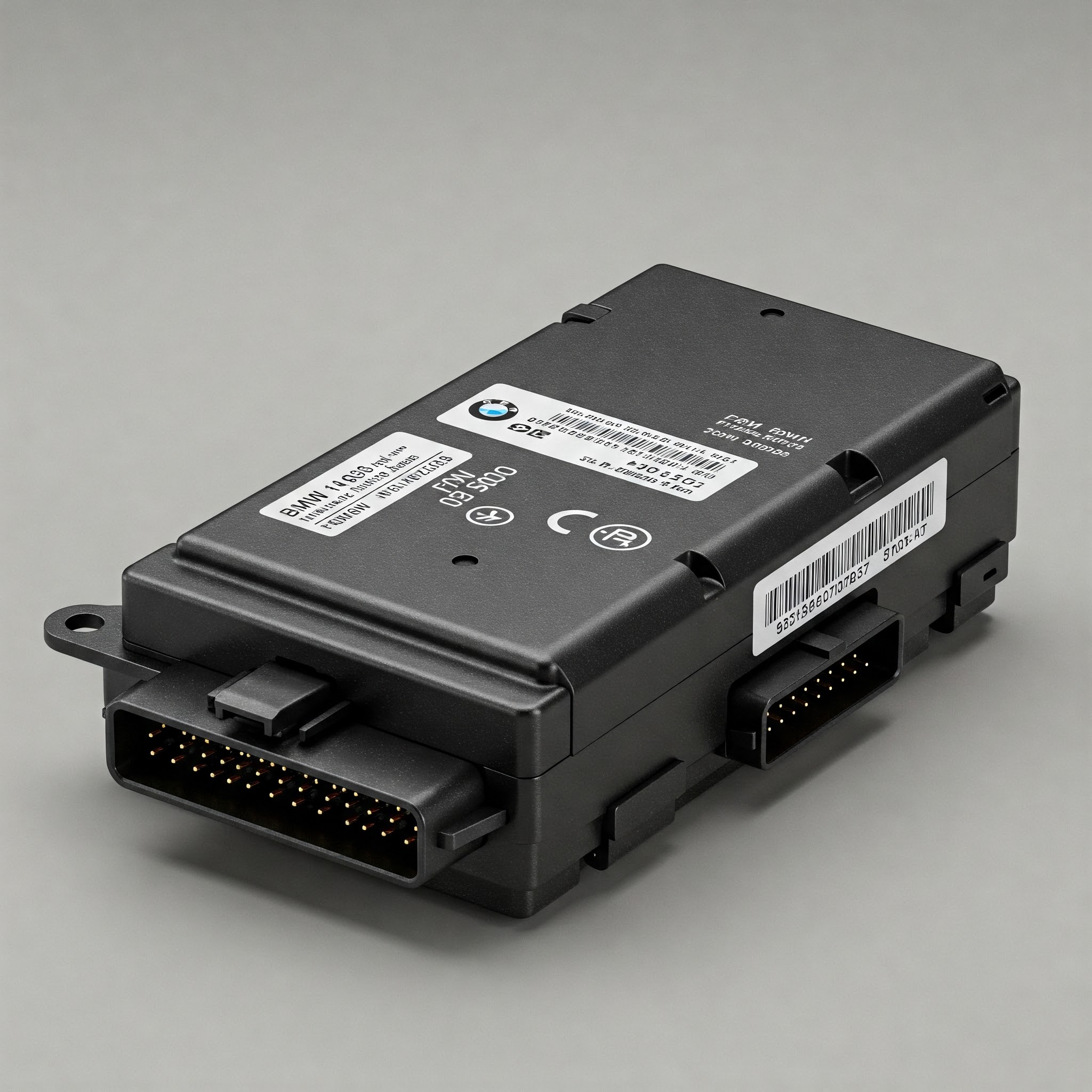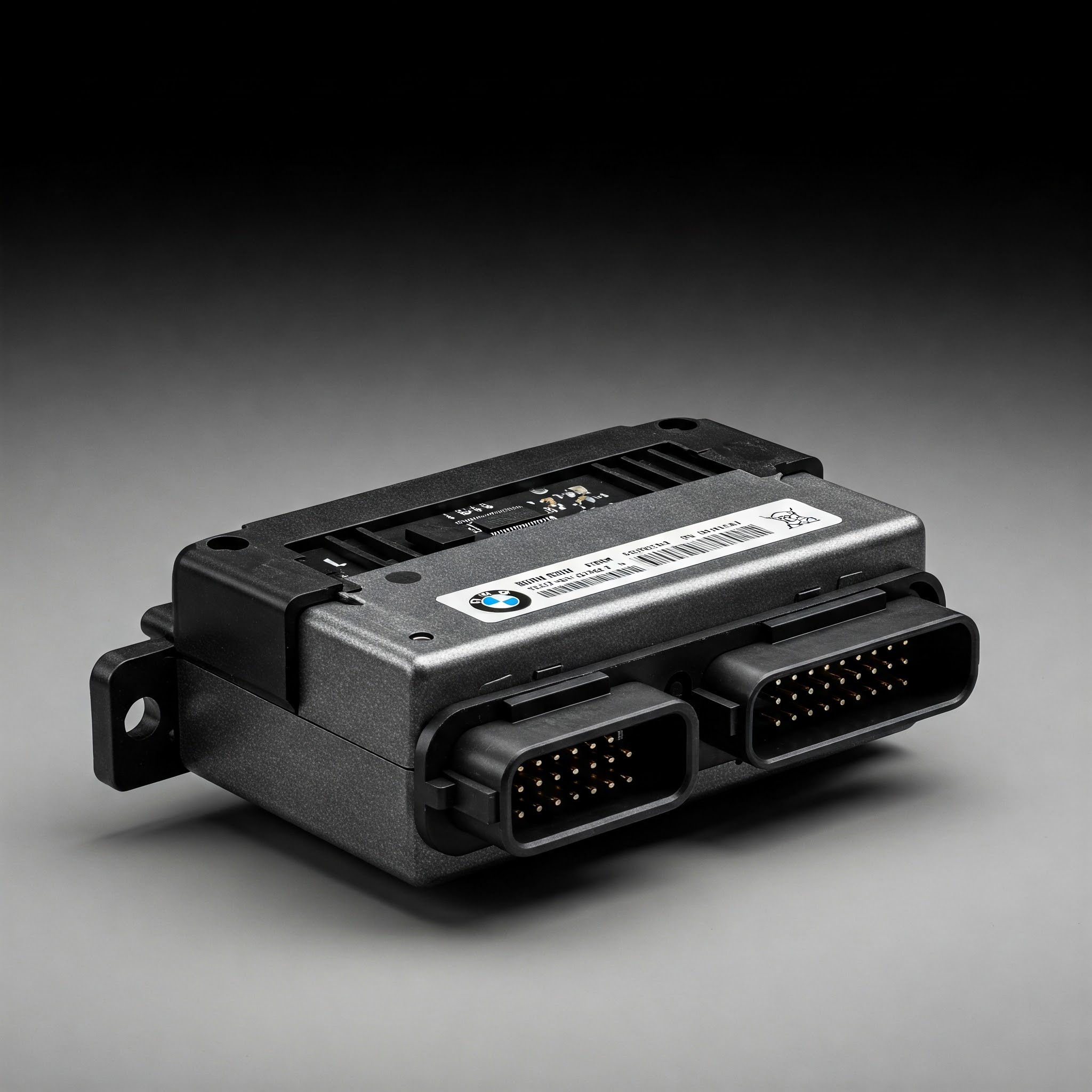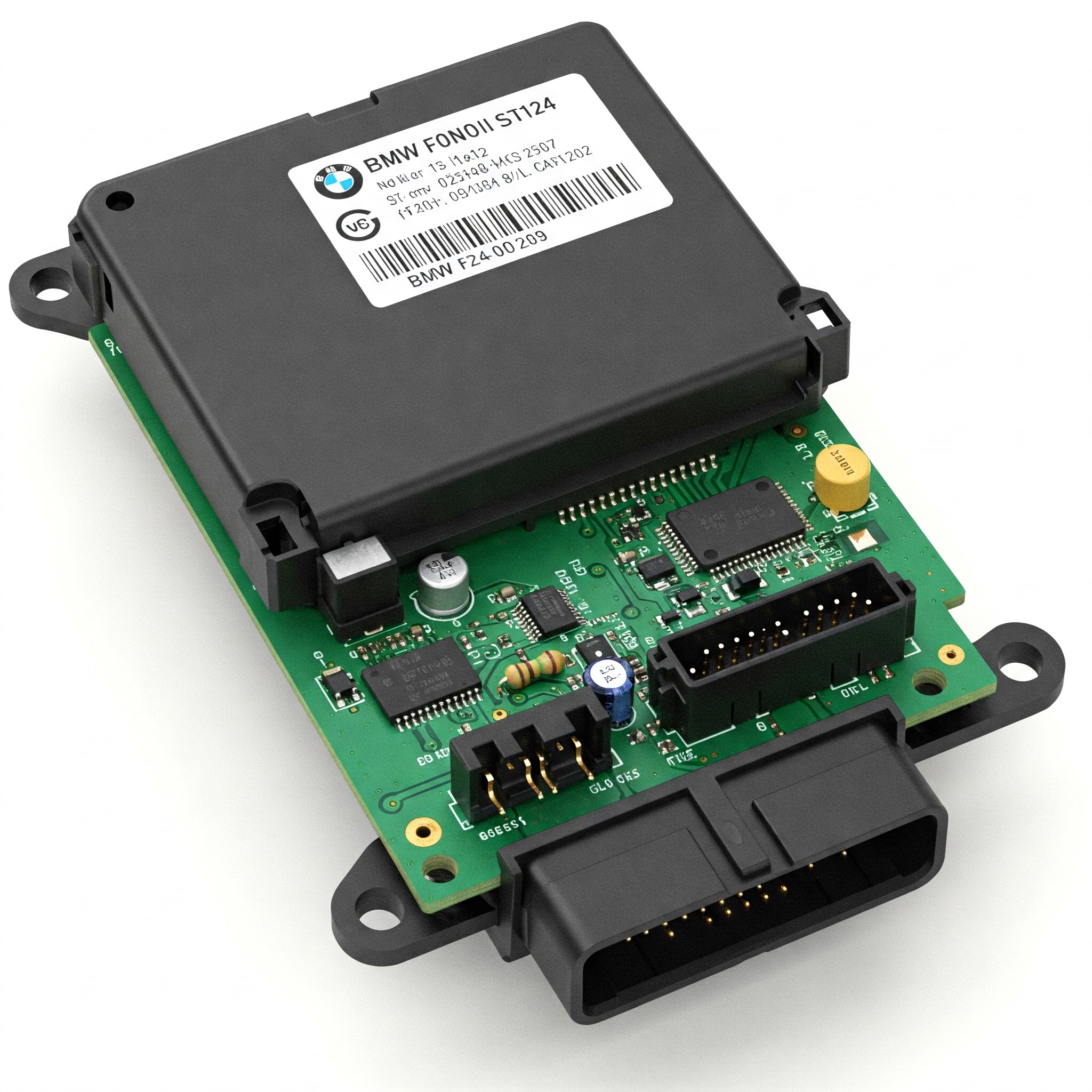
Find Expert BMW FRM Module Repair Near Me for Quick Solutions
If you’re driving a BMW, you might have heard about the Footwell Module (FRM) and its importance. This little part controls a lot of your car’s electrical functions, like windows and lights. When it acts up, it can lead to all sorts of headaches. So, knowing where to find reliable BMW FRM module repair near me can save you time and frustration. Let’s dive into what the FRM does, how to spot issues, and what your repair options are.
Key Takeaways
- The FRM module is key for controlling lights and windows in your BMW.
- Signs of a failing FRM include malfunctioning lights and windows.
- Professional repair is often the best option for FRM issues.
- Safety is crucial when replacing the FRM module; follow proper guidelines.
- Regular maintenance can help prevent FRM problems and keep your BMW running smoothly.
Understanding BMW FRM Module Functionality

Role of the FRM Module in BMW Vehicles
Okay, so what exactly is this FRM thing everyone keeps talking about? Well, in your BMW, the Footwell Module (FRM) is like a central control unit, mainly dealing with stuff like lights, windows, and door locks. Think of it as the brain for all those functions. It makes sure everything works together smoothly. Without it, you might find yourself with some pretty annoying electrical problems. It’s more important than you might think for your car’s overall operation.
Common Issues Associated with FRM Modules
FRM modules aren’t perfect, and they can have problems. Some common issues include:
- Lights flickering or not working at all.
- Windows refusing to roll up or down.
- Central locking acting up.
- The car not starting.
These problems can often be traced back to a faulty FRM. Sometimes, it’s a software glitch, other times it’s a hardware failure. Either way, it can be a real headache. A faulty FRM can affect your BMW’s performance significantly.
Importance of Regular FRM Inspections
How often should you get your FRM checked? It’s a good idea to have it inspected at least once a year, or whenever you notice any weird electrical issues. Catching problems early can save you from bigger, more expensive repairs down the road. Regular inspections can also help maintain optimal vehicle performance. Think of it like going to the doctor for a check-up – preventative care is always a good idea.
Ignoring potential FRM issues can lead to more serious problems down the line. Regular inspections can help identify and address minor issues before they escalate, saving you time and money in the long run.
Identifying Symptoms of FRM Module Failure
Common Signs of FRM Malfunction
Okay, so you think your BMW’s FRM module might be acting up? It’s not always obvious, but there are definitely some telltale signs. One of the most common indicators is wonky behavior with your car’s lights. I’m talking headlights that won’t turn on, taillights doing their own thing, or interior lights flickering like a haunted house. Windows refusing to roll up or down is another big clue. Basically, if anything electrical related to your lights, windows, or door locks is misbehaving, the FRM could be the culprit. Here’s a quick rundown:
- Lights acting erratically (flickering, not turning on, etc.)
- Power windows not working
- Remote key fob malfunctions
- Dashboard warning lights related to electrical systems
How to Diagnose FRM Issues
So, you’ve noticed some weird electrical stuff happening in your BMW. How do you actually diagnose if it’s the FRM? Well, the first step is to check for any obvious issues, like blown fuses. If the fuses are fine, you’ll probably need to get your hands on a diagnostic tool that can read fault codes. These tools can pull codes directly from the car’s computer, which can point you right to the FRM. If you see codes related to communication errors with the FRM, or codes related to the lighting or window systems, that’s a pretty good sign the FRM is having problems. Don’t have a diagnostic tool? Most auto repair shops do, and they can run a quick diagnostic check for you. Keep in mind that a BMW footwell module repair service might be needed.
When to Seek Professional Help
Alright, you’ve got a sneaking suspicion that your FRM is toast. When is it time to throw in the towel and call in the pros? Honestly, unless you’re super comfortable working with car electronics, it’s usually best to seek professional help sooner rather than later. If you’re seeing multiple symptoms, like lights, windows, and locks all acting up at once, that’s a red flag. Also, if you’ve tried some basic troubleshooting steps (like checking fuses) and nothing seems to be working, it’s time to get a professional opinion. Trying to fix it yourself without the right knowledge or tools can sometimes make the problem worse, and you could end up causing even more damage to your car’s electrical system. Plus, a qualified technician can properly diagnose the issue and determine if it’s really the FRM or something else entirely.
Ignoring these symptoms can lead to further electrical problems and potentially leave you stranded. It’s better to address the issue promptly to avoid more costly repairs down the road.
Exploring Repair Options for BMW FRM Modules

Professional Repair Services
When your BMW’s FRM module goes haywire, you’ve got a few paths to consider. One of the most reliable is seeking out professional repair services. These shops have the tools and, more importantly, the expertise to diagnose and fix the problem correctly. They can perform tasks like reprogramming the module or replacing faulty components. Sending your FRM3 for repair can save time and money compared to full replacement.
DIY Repair Considerations
Thinking about tackling the FRM repair yourself? It’s doable, but proceed with caution. This isn’t your average oil change. You’ll need some specialized tools, a good understanding of automotive electronics, and access to reliable repair information. If you’re comfortable with coding and have experience with similar repairs, it might be an option. Otherwise, you could end up causing more damage than you started with. Here’s what you’ll need:
- OBD-II scanner
- Coding software (like BMW ISTA)
- A stable power supply
- Patience – lots of it!
Attempting a DIY repair without the right knowledge can lead to further issues. It’s often better to leave it to the pros unless you’re confident in your abilities.
Cost Comparison of Repair vs. Replacement
Okay, let’s talk money. Repairing an FRM module is generally cheaper than replacing it outright. A new module, plus the labor to install and code it, can easily run you a hefty sum. Repair costs vary depending on the extent of the damage and the shop’s labor rates. Here’s a rough idea:
| Service | Estimated Cost |
|---|---|
| FRM Repair | $200 – $500 |
| FRM Replacement | $400 – $1200 |
Keep in mind that these are just estimates. Get quotes from a few different shops to get a better sense of the actual cost for your specific situation. Sometimes, a repair isn’t possible, and replacement is the only option. But it’s always worth exploring the repair route first to save some cash.
Safety Measures During FRM Module Replacement
Essential Tools for Safe Replacement
When you’re getting ready to swap out your BMW’s FRM module, having the right tools isn’t just about convenience; it’s about safety. You’ll definitely need a good set of screwdrivers (both Phillips and flathead), a socket set, and some pliers. A multimeter is super handy for checking electrical connections. But the most important tool? A BMW-specific diagnostic tool or software to properly code the new module to your car. Don’t forget personal protective equipment like gloves and eye protection.
Steps to Ensure a Secure Environment
Before you even think about touching anything, disconnect the car battery. Seriously, this is step one. Then, make sure you’re working in a well-lit area. Static electricity can fry electronic components, so use a static discharge wrist strap. Keep kids and pets away from the workspace.
Here’s a quick checklist:
- Disconnect the battery (negative terminal first!).
- Wear a static wrist strap.
- Work in a clean, dry, well-lit space.
- Keep a fire extinguisher nearby (just in case!).
Post-Replacement Safety Checks
Okay, you’ve installed the new FRM module. Great! But don’t just slap everything back together and call it a day. Double-check all your connections to make sure they’re secure. Use your diagnostic tool to clear any error codes and verify that all the lights, windows, and other systems controlled by the FRM are working correctly. Take the car for a short test drive and keep an eye out for any weird behavior. If something seems off, don’t ignore it—investigate further before you end up stranded somewhere.
It’s always a good idea to have a professional double-check your work, especially if you’re not super confident with car electronics. A small mistake can lead to bigger problems down the road.
Maintaining Your BMW FRM Module
It’s easy to overlook the FRM module, but keeping it in good shape is key to avoiding headaches down the road. Think of it as preventative care for your car’s electrical system. A little attention now can save you from bigger problems later.
Regular Software Updates
Keeping your BMW’s software up-to-date is like giving it a regular checkup. Software updates often include fixes and improvements that can address potential issues with the FRM module. It’s a simple step that can make a big difference. You can usually get these updates done at your local BMW dealership or a trusted mechanic shop. Don’t skip them!
Battery Maintenance Tips
Your car’s battery health is directly linked to the FRM module’s performance. A weak or dying battery can cause voltage fluctuations that mess with the FRM. Make sure your battery is in good condition and properly charged. Here are a few tips:
- Regularly check the battery’s voltage.
- Clean any corrosion from the battery terminals.
- Consider using a battery tender if you don’t drive your car often.
Avoiding Environmental Damage
The FRM module isn’t a fan of extreme conditions. Moisture and high temperatures can cause damage over time. Try to avoid exposing your car to these elements as much as possible. Park in the shade during hot days and make sure your car’s interior stays dry. If you live in an area with high humidity, consider using a dehumidifier in your garage. Also, make sure to get BMW FRM module repair if you notice any issues.
Warranty and Service Guarantees for FRM Repairs
It’s always a good idea to know what kind of protection you have when getting your BMW’s FRM module fixed. Let’s break down what you should expect.
Understanding Warranty Coverage
Warranty coverage for FRM repairs can vary quite a bit. Some shops offer a warranty that covers both parts and labor for a certain period, usually a year or two. This means if the module fails again within that time, you’re covered. It’s important to ask about the specifics: What exactly is covered? What isn’t? Are there any conditions that could void the warranty? For example, some warranties don’t cover damage caused by electrical surges or improper installation. Also, keep in mind that if your car is still under the original manufacturer’s warranty, FRM issues might be covered by the dealership, especially if it’s related to a known defect. Check your warranty paperwork or contact your dealer to find out.
What to Expect from Repair Services
When you take your BMW in for FRM repair, you should expect a few things. First, a proper diagnosis. The shop should use diagnostic tools to pinpoint the exact problem with the module. They should also explain the issue to you in plain language, not just technical jargon. Then, you should get a clear estimate of the repair cost, including parts and labor. The repair itself should be done by qualified technicians using quality parts. After the repair, the shop should test the module to make sure it’s working correctly. Finally, they should provide you with documentation of the repair, including any warranty information.
Importance of Choosing Certified Technicians
Choosing certified technicians for your FRM repairs is super important. Certified techs have the training and experience to properly diagnose and repair these complex modules. They’re also more likely to use the right tools and techniques, which can help prevent future problems. Plus, a shop with certified technicians is more likely to stand behind their work and offer a solid warranty. Don’t be afraid to ask about a technician’s qualifications and certifications before you commit to a repair. It’s worth the extra effort to ensure your BMW is in good hands.
Getting your BMW’s FRM module repaired can be a bit stressful, but knowing what to expect in terms of warranty and service guarantees can make the process a lot smoother. Do your research, ask questions, and choose a reputable shop with certified technicians. That way, you can get back on the road with confidence.
Finding Expert BMW FRM Module Repair Near You
How to Locate Reliable Repair Shops
Finding a trustworthy shop for your BMW’s FRM module isn’t always easy. Start by asking other BMW owners for recommendations. Online forums and local BMW clubs can be great resources. Look for shops that specialize in European vehicles, as they’re more likely to have the right tools and expertise. Don’t just pick the first shop you see; do some digging.
Evaluating Customer Reviews and Ratings
Customer reviews are your friend. Check out sites like Google, Yelp, and the Better Business Bureau. Pay attention to both the overall rating and the specific comments people leave. Look for patterns – are there multiple complaints about the same issue? A few bad reviews aren’t necessarily a deal-breaker, but a consistent stream of negative feedback is a red flag. Also, see how the shop responds to negative reviews. Do they address the concerns professionally?
Questions to Ask Before Committing to a Service
Before handing over your keys, ask some important questions. Here’s a list to get you started:
- Are they experienced with BMW FRM module repair?
- Do they offer a warranty on their work?
- What’s their diagnostic process?
- Can they provide a detailed estimate before starting the repair?
- Do they use genuine BMW parts or aftermarket alternatives?
Getting clear answers to these questions can help you avoid surprises and ensure you’re getting quality service. Don’t be afraid to shop around and compare quotes from different shops. Your BMW deserves the best care, so take your time and choose wisely.
Wrapping It Up
Finding a reliable place for BMW FRM module repair doesn’t have to be a headache. Whether you’re dealing with flickering lights or windows that won’t budge, getting professional help can save you time and frustration. Remember, it’s best to have these issues checked out sooner rather than later to avoid bigger problems down the road. So, take a moment to look for local experts who can get your BMW back in shape quickly. Your car deserves it, and so do you!
Frequently Asked Questions
What does the BMW FRM module do?
The BMW FRM module, or Footwell Module, controls important features like lights and windows in your car. If it stops working, you might have problems with lights or windows not functioning properly.
How can I tell if my BMW FRM module is broken?
If your windows aren’t working, the lights flicker or don’t turn on, or your door locks are acting strange, these could be signs that the FRM module is failing.
Is it safe to fix the FRM module myself?
It’s not a good idea to try fixing the FRM module on your own. The electronics are complicated, and it’s best to have a professional handle it to avoid making things worse.
What are my options if the FRM module needs repair?
You can take your car to a professional repair shop, or if you feel confident, you can try to fix it yourself, but be careful. It’s often better to get an expert to look at it.
How much does it cost to replace a BMW FRM module?
Replacing a BMW FRM module usually costs between $300 and $600, but it can vary based on your car model and the service provider.
What should I do after getting my FRM module fixed?
After fixing your FRM module, make sure to keep your car’s software updated, check the battery regularly, and protect the module from water and extreme temperatures.

